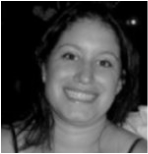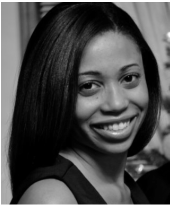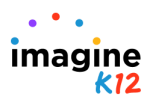Providing effective professional development is hard! Teachers are incredibly busy, and school and district resources are always limited. How can administrators support ongoing, personalized growth for their teachers throughout the year? How can educators access the right resources at the right times, to help them take their teaching practice to the next level?
We recently had the pleasure of interviewing two leaders who are setting far-reaching goals for teacher development in their schools: Vanessa Garza, Director of Teacher Development at Partnership for LA Schools, and Melissa Williams, Director of Teacher Effectiveness at KIPP Metro Atlanta Schools. We asked each of them to tell us about one new edtech tool they’ve adopted to support their visions of personalized teacher growth.
We recently had the pleasure of interviewing two leaders who are setting far-reaching goals for teacher development in their schools: Vanessa Garza, Director of Teacher Development at Partnership for LA Schools, and Melissa Williams, Director of Teacher Effectiveness at KIPP Metro Atlanta Schools. We asked each of them to tell us about one new edtech tool they’ve adopted to support their visions of personalized teacher growth.

Vanessa Garza, Partnership for LA Schools
the challenge
At the Partnership for LA Schools, Vanessa Garza supports teacher development for 171 elementary, middle, and high schools. Vanessa strives to support her teachers by providing them with frequent opportunities for meaningful feedback on their teaching practice. She notes, “We know that frequent observations are effective at making teachers better. But it’s hard to sustain observation cycles because frequent observations can be cumbersome.”
the solution
To help overcome some of the challenges that frequent observations can pose for administrators and teachers, Vanessa uses TeachBoost to facilitate the observation process.
She described some of the key efficiencies that she’s found using TeachBoost:
the challenge
At the Partnership for LA Schools, Vanessa Garza supports teacher development for 171 elementary, middle, and high schools. Vanessa strives to support her teachers by providing them with frequent opportunities for meaningful feedback on their teaching practice. She notes, “We know that frequent observations are effective at making teachers better. But it’s hard to sustain observation cycles because frequent observations can be cumbersome.”
the solution
To help overcome some of the challenges that frequent observations can pose for administrators and teachers, Vanessa uses TeachBoost to facilitate the observation process.
She described some of the key efficiencies that she’s found using TeachBoost:
- Observation reports are automatically organized and distributed to the right people, relieving administrators of a formerly time-consuming process.
- Teachers can measure their own performance relative to standards and track their progress towards individual goals set at the beginning of the year.
- Observers get a simple interface for recording notes, tagging evidence, giving feedback, and linking to supportive resources (e.g. Teaching Channel videos) while in the classroom.
| The TeachBoost observer interface has been especially instrumental in enabling more frequent observations at Partnership schools. The software streamlines the observation process and provides enough guidance and support such that Vanessa has been able to implement a system of peer observations in her schools, increasing the opportunities for every teacher to receive feedback. | “Observers are able to work efficiently with TeachBoost. . . observers can give the teacher |
Vanessa sums up her experience: “Observers are able to work efficiently with TeachBoost. It’s not just a file manager, it’s an organizer and assistant during the observation process, so observers can give the teacher 100% of their time and attention while they’re in the classroom.”
outcomes
Overall, the higher frequency of observations at Partnership schools has changed the value proposition of observations for both teachers and observers. Rather than being evaluative, observations are developmental and growth-focused. Using technology to tighten up the feedback loop, Vanessa has given her teachers the right supports to develop their practice.
Overall, the higher frequency of observations at Partnership schools has changed the value proposition of observations for both teachers and observers. Rather than being evaluative, observations are developmental and growth-focused. Using technology to tighten up the feedback loop, Vanessa has given her teachers the right supports to develop their practice.

Melissa Williams, KIPP Metro Atlanta
the challenge
Melissa Williams is the Director of Teacher Effectiveness at KIPP Metro Atlanta Schools, where she supports 220 teachers and almost 60 leaders across eight schools. Melissa’s goal, and her challenge, is to bring the teacher development rubric to life for her teachers and leaders. As she describes it, “Teachers want to see what great teaching looks like, but it’s hard for them to go to another school or even another classroom in their own building to observe a teacher during a moment of excellent teaching.”
the solution
Melissa adopted the Mission 100% video library to give her teachers easy access to examples of best practices. Mission 100% offers a comprehensive collection of short video clips that capture specific teaching skills in real classrooms. The videos are tagged to a standard framework and, in Melissa’s case, to KIPP’s teaching rubric, so teachers can always find the skills they want to work on.
After deciding to roll out Mission 100% in her schools, Melissa ended up going a step further and working with Mission 100% to film additional footage of exemplary teaching moments in KIPP Metro Atlanta Schools’ classrooms, focusing on examples specific to KIPP’s particular culture and practices. The filming process included classrooms across the K-12 spectrum and incorporated input from instructional managers, school leaders, and teachers on identifying exemplary teaching moments and aligning them to the teaching rubric.
the challenge
Melissa Williams is the Director of Teacher Effectiveness at KIPP Metro Atlanta Schools, where she supports 220 teachers and almost 60 leaders across eight schools. Melissa’s goal, and her challenge, is to bring the teacher development rubric to life for her teachers and leaders. As she describes it, “Teachers want to see what great teaching looks like, but it’s hard for them to go to another school or even another classroom in their own building to observe a teacher during a moment of excellent teaching.”
the solution
Melissa adopted the Mission 100% video library to give her teachers easy access to examples of best practices. Mission 100% offers a comprehensive collection of short video clips that capture specific teaching skills in real classrooms. The videos are tagged to a standard framework and, in Melissa’s case, to KIPP’s teaching rubric, so teachers can always find the skills they want to work on.
After deciding to roll out Mission 100% in her schools, Melissa ended up going a step further and working with Mission 100% to film additional footage of exemplary teaching moments in KIPP Metro Atlanta Schools’ classrooms, focusing on examples specific to KIPP’s particular culture and practices. The filming process included classrooms across the K-12 spectrum and incorporated input from instructional managers, school leaders, and teachers on identifying exemplary teaching moments and aligning them to the teaching rubric.
| outcomes The Mission 100% library has given Melissa’s teachers clear, instantly-accessible examples of what best practices look like. Teachers are able to find the guidance they need and then translate those skills into their own classrooms. | “. . . now, our team can show them what these teaching skills look like at level 4 and 5 (master teacher level). So when they go in and evaluate teachers, they know what mastery looks like.” |
KIPP’s instructional managers have found that the videos support their work both by providing specific benchmarks for evaluations and as a reference resource for coaching their teachers. Melissa says of the instructional managers, “Last year we revamped our rubric, and it was hard for them to pinpoint what each skill looked like at master teacher level. But now, our team can show them what these teaching skills look like at level 4 and 5 (master teacher level). So when they go in and evaluate teachers, they know what mastery looks like.”
| Words of Wisdom Both Melissa and Vanessa emphasize that when introducing new tech (or new practices generally) in professional development, they focus on innovations that will support individual growth and improvement, rather than placing greater emphasis on evaluation. For creating buy-in, Vanessa advises that new tech should do more than just replace some part of a current system, it should improve the experience of professional development for all of the stakeholders. Melissa recommends laying out a long-term plan for the role technology will play in teacher growth and development, so that teachers and key stakeholders can understand how it fits into the larger vision. |

 RSS Feed
RSS Feed